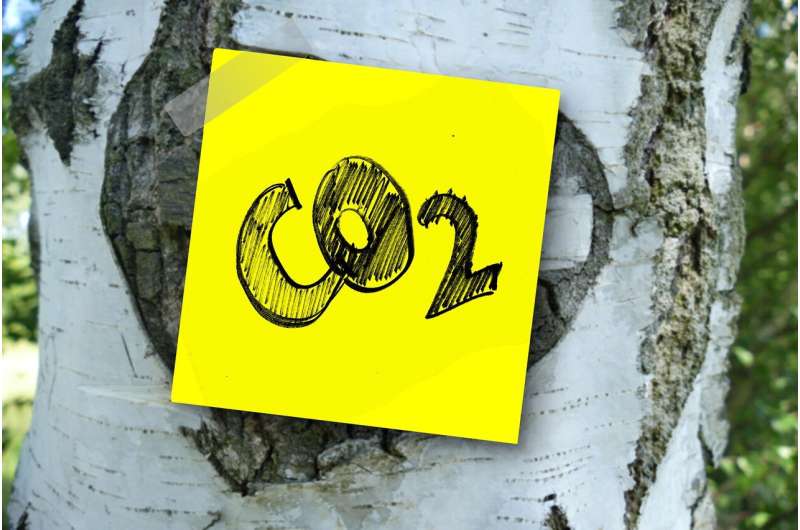'Net zero'? 'Carbon neutral'? Climate change jargon got you confused? Let us explain

Net zero what? Carbon sequestration who? And what on Earth do greenhouses have to do with gases?
While the global threat posed by climate change means we hear about it often, it's also a subject few of us studied in school—filled with technical or confusing jargon that can be off-putting even to those who want to learn more.
Here's a cheat sheet that could help bring you up to speed.
What do greenhouses have to do with climate change?
When we speak of greenhouse gases, we're mostly talking about carbon dioxide. While naturally present in the atmosphere, CO2 levels have increased substantially as a result of humans burning fossil fuels like coal, oil and natural gas. In the atmosphere, CO2 acts like a blanket around the Earth, trapping heat that otherwise would dissipate into space.
The effect is like a greenhouse, where the glass walls and roof allow the sun's rays in while preventing most of the heat from escaping. That warmth is good for the plants within the greenhouse—especially in colder climates. But it's not so good when it's happening across the Earth.
Global temperatures have risen 1.9 degrees Fahrenheit since 1880, a timeline that coincides with the rise of the Industrial Revolution, when humanity first started burning large amounts of coal to run factories. NASA reports that most of the temperature increase has happened since 1975, when nearly all the world was burning fossil fuels and spewing what we now often call greenhouse gases into the atmosphere.
Why do we have a carbon budget?
Looking ahead, scientists agree the world needs to hold down the global increase in average temperatures to no more than 1.5 degrees Celsius (about 2.7 degrees Fahrenheit) over pre-industrial levels. If temperatures go over that, especially over 2 degrees Celsius, scientists believe the global warming effects we're already seeing will become devastating.
To achieve that goal, they've put us on a carbon budget—a calculation of how much carbon dioxide we can release into the atmosphere without raising temperatures to a dangerous level. Just like your household budget, if you exceed your target figure, you go bust.
Unfortunately, to avoid going over budget, we can't release more than 440 billion tons of carbon dioxide into the Earth's atmosphere. By some estimates, the world is on track to release that much within the next seven years. After that, we'll have exceeded our budget.
As you can see, that doesn't leave much room for carbon spending sprees.
What is carbon sequestration?
As anyone who has balanced a budget knows, you have two ways to hit your mark: spend less or earn more. While the concept of reducing greenhouse gas emissions is pretty straightforward, coming at it from the other direction, by pulling carbon dioxide out of the atmosphere, is more complicated.
But it can be done. One way is installing carbon dioxide "scrubbers" in smokestacks to grab the carbon before it hits the atmosphere. Think of it like finding money on the sidewalk to boost your savings.
Another way is growing plants and trees that absorb carbon dioxide from the atmosphere. Similarly, we have the technology for sucking carbon dioxide straight from the air and pumping it deep underground where it can be safely—and indefinitely—stored.
This is called either carbon sequestration or carbon capture and storage.
If it sounds too good to be true, well, it is still very expensive. Researchers believe that with practice and bigger installations, carbon sequestration will get cheaper, but it could take decades to get to that point. Scientists think of it as an investment in the future, like going to college or getting certified for a higher-paying job. In the meantime, though, that means a lot of belt-tightening on the carbon budget.
What does 'net zero' mean?
If we want to stay within our carbon budget and keep the global thermostat from rising too much more, we need to severely limit the levels of greenhouse gases entering the atmosphere.
The good news: We have the know-how to lower emissions from much of our transportation, industrial uses and agriculture systems. The bad news: It's not really feasible to think we can eliminate them all, at least not within the next 10 or 20 years.
But there's more good news: We're getting better at carbon sequestration and know other carbon capture techniques.
That's where "net zero"—also known as "carbon neutral"—comes in. The idea is to lower emissions as much as we can, then use carbon capture techniques to make up for the CO2 we're still adding to the atmosphere so that, in effect, we're not adding emissions and cutting into our limited carbon budget.
Here's an example: Say humanity cuts 87% of the greenhouse gases it's releasing into the atmosphere. It will need to use carbon capture to suck another 13% from the air to reach 100%. "Net zero" achieved. Carbon budget met. Greenhouse gases contained.
(c)2022 USA Today
Distributed by Tribune Content Agency, LLC.



















